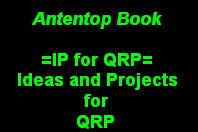


Antentop is FREE e-magazine devoted to Antennas and Amateur Radio an
Special page devoted to
Jagadis Chandra Bose

Custom Search
|
ANTENTOP-
02- 2003, # 003 |
Jagadis Chandra Bose |
|
|
|
||
Calcutta. Following the example
of Lord Rayleigh, Jagadis Bose made extensive use of scientific
demonstrations in class; he is reported as being extraordinarily
popular and effective as a teacher. Many of his students at the
Presidency College were destined to become famous in their own
right - for example S.N. Bose, later to become well known for
the Bose-Einstein statistics.
A book by Sir Oliver Lodge, "Heinrich Hertz and His Successors,"
impressed Bose. In 1894, J.C. Bose converted a small enclosure
adjoining a bathroom in the Presidency College into a laboratory.
He carried out experiments involving refraction, diffraction and
polarization. To receive the radiation, he used a variety of different
junctions connected to a highly sensitive galvanometer. He plotted
in detail the voltage-current characteristics of his junctions,
noting their non-linear characteristics. He developed the use
of galena crystals for making receivers, both for short wavelength
radio waves and for white and ultraviolet light. Patent rights
for their use in detecting electromagnetic radiation were
granted to him in 1904. In 1954 Pearson and Brattain [14] gave
priority to Bose for the use of a semi-conducting crystal as a
detector of radio waves. Sir Neville Mott, Nobel Laureate in 1977
for his own contributions to solid- state electronics, remarked [12] that "J.C. Bose was at least 60
years ahead of his time" and "In fact, he had anticipated
the existence of P-type and N-type semiconductors."
|
In 1895 Bose gave his first public
demonstration of electromagnetic waves, using them to ring a bell
remotely and to explode some gunpowder. In 1896 the Daily Chronicle
of England reported: "The inventor (J.C. Bose) has transmitted
signals to a distance of nearly a mile and herein lies
the first and obvious and exceedingly valuable application of
this new theoretical marvel." Popov in Russia was doing similar
experiments, but had written in December 1895 that he was still
entertaining the hope of remote signalling with radio waves. The
first successful wireless signalling experiment by Marconi on
Salisbury Plain in England was not until May 1897. The 1895 public
demonstration by Bose in Calcutta predates all these experiments.
Invited by Lord Rayleigh, in 1897 Bose reported on his microwave
(millimeter-wave) experiments to the Royal Institution and other
societies in England [8]. The wavelengths he used ranged
from 2.5 cm to 5 mm. In his presentation to the Royal Institution
in January 1897 Bose speculated [see p.88 of ref.8] on the existence
of electromagnetic radiation from the sun, suggesting that either
the solar or the terrestrial atmosphere might be responsible for
the lack of success so far in detecting such radiation - solar
emission was not detected until 1942, and the 1.2 cm atmospheric
water vapor absorption line was discovered during experimental
radar work in 1944. Figure 1
shows J.C. Bose at the Royal Institution
in London in January 1897; Figure 2 shows
a matching diagram, with a brief description of the apparatus.
|
|
|
|
|
|
|
Figure 1. J.C. Bose at the Royal Institution,
London, 1897. [13]
|
||
|
|
|
|
|
Page 88 |
||
 |
 |
 |
 |
Just for Fun:

Powered byIP2Location.com
Thanks for your time!
Last Updated:
February 8, 2018 22:31





